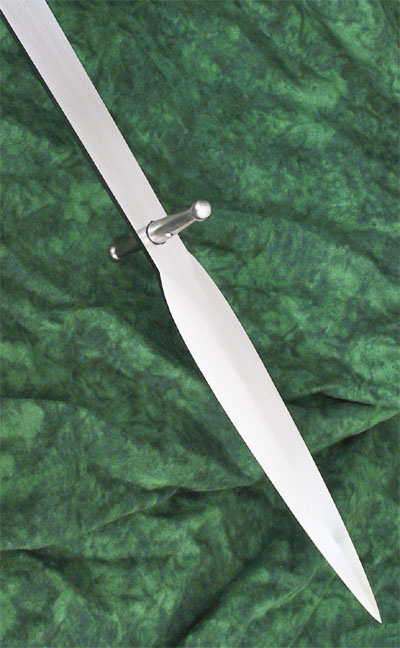Posts: 3 Location: Shenandoah Valley, Virginia
Sun 28 Mar, 2004 3:55 pm
Though I am very tardy in getting round to this post, I am the person who ordered the Arms & Armor #918 Maximilian Hunting Sword. The departure point was a detail from "The Triumph of Maximilian' (1526), page 8, Howard L. Blackmore's "Hunting Weapons" (1971) in the well-done Arms & Armor Series. The artist is probably Hans Burgkmair the Elder. It shows three boar hunters on horseback with their boar swords. That carried by the right hand figure was the one used as the starting point for the A& A custom piece. The "Maximilian" was built on the platform of the #156 English Two Handed Sword.
The sword, as delivered, exhibits A&A's superb workmanship. The "boar stop" functions, as correctly mentioned above, as a block to prevent the enraged boar from wriggling up to the gizzard of the hunter. A number of pig-stickers in India discovered this tendency the hard way. The A&A sword functions superbly for its intended purpose, and I am extremely pleased with it. Hats off to A&A!
Yes, it does have substantial weight. It needs it for the required sturdiness. The impact of the charging boar also requires a very substantial weapon. (Never underestimate the intestinal fortitude of old Maximilian. His hunting adventures - well-attested - are worth a read.) Yes, it is a thrusting weapon. Why a boar sword as opposed to a boar spear? The sword was considered more "noble," for various reasons, including exposing the user to a much more "up close & personal" encounter with the boar. It levels the playing field a bit, when compared with the spear. The boar swords were used from horseback. If you wish, have a look at a tapestry in the Metropolitan Museum, which shows Maximilian himself in action with a similar sword. The link is
http://www.metmuseum.org/special/Tapestry/40.L.asp
When you are enlarging, click directly on the sword to center the enlargement on the weapon. The armor worn by the hounds is responsible for the unofficial title of this famous tapestry, "The Attack of the Killer Armadilloes."
A&A also makes an excellent boar spear - the #112 Friedrich IV Boar Spear, which I also have & highly recommend.
The other hunting sword pictured in this thread is of the estoc type. That's for a future project!
Best wishes!
